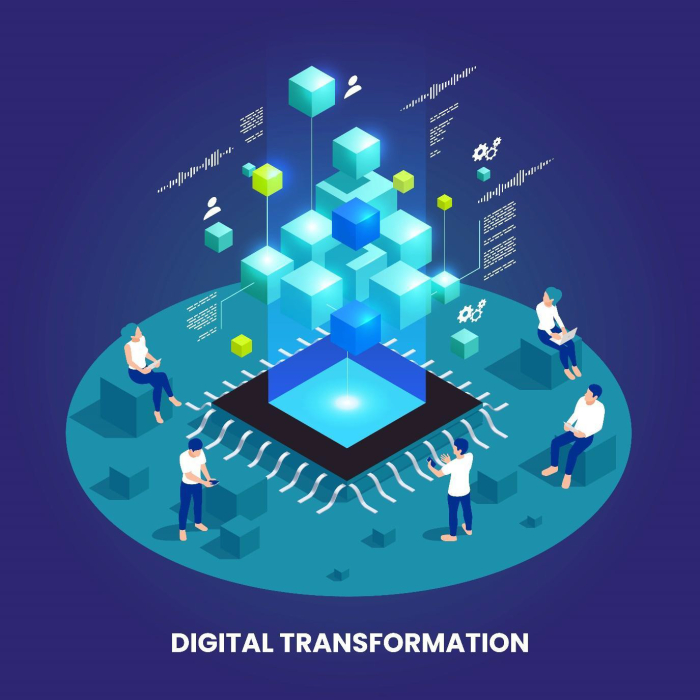
 Data Structure
Data Structure Networking
Networking RDBMS
RDBMS Operating System
Operating System Java
Java MS Excel
MS Excel iOS
iOS HTML
HTML CSS
CSS Android
Android Python
Python C Programming
C Programming C++
C++ C#
C# MongoDB
MongoDB MySQL
MySQL Javascript
Javascript PHP
PHP
- Selected Reading
- UPSC IAS Exams Notes
- Developer's Best Practices
- Questions and Answers
- Effective Resume Writing
- HR Interview Questions
- Computer Glossary
- Who is Who
Top Digital Transformation Trends in Government
State and local government IT trends point to a greater emphasis on enhancing the digital experiences of staff and people. Many institutions and organizations that receive government financing continue to employ obsolete methods to accomplish their goals. By improving the digitalization and modernization of these procedures, handling delays, safeguards, and the efficiency of the entire IT sector process for the public and government sectors are all reduced. It transcends conventional careers like sales, marketing, and customer service.
Why Do We Need Digital Transformation?
Customers want firms to use the finest online and digital tools to continue to shine in the market in an increasingly digital environment. If engaging with a business online is too cumbersome, there are always a number of rivals that may be able to provide a user with better access to their services. It should be comprehensive, influencing domestic and foreign interactions, including how teams engage with divisions such as IT, sensors and networks, and resources for work.

Top Digital Transformation Trends in Government
Mobility
Numerous procedures and processes will be simplified at the federal, state, and municipal levels as a result. Shared mobility is becoming more and more popular for all the right reasons as people accept the new normal and successfully adjust to the new procedures. Given that personal automobiles remain inactive for 95% of the time, shared mobility enables users to transport passengers while avoiding ownership expenses like insurance, tax, maintenance, and parking.
The transition to shared transportation has already begun. We all know that technological advancements are essential to the future of mobility, and MaaS platforms are always changing to provide entrepreneurs with the tools and integrations they need to differentiate themselves from the competition. They assist them with in-app features like simple booking, payment, ride scheduling, real-time tracking, etc.
SaaS Platform
Government enterprises may increase the services they offer by using a SaaS platform. Governments could often roll out new functions and services that rely on common parts and data sources.
Governments could be able to expand their offerings on a highly integrated and flexible platform as people's needs evolve. Property taxes may be looked up, seen, and paid digitally by residents. Services like online billing and recurring payments have been implemented in the years thereafter, offering individuals more choices.
Cybersecurity
Cybersecurity is the first defense against harmful attacks by hackers, spammers, and cybercriminals on internet-connected devices and services. Businesses employ this technique to safeguard themselves against identity theft, ransom ware attacks, phishing scams, data breaches, and financial losses. When technology has done so much good for us, it can be difficult to believe that potential hazards are hiding behind every device and platform. Regardless of how positively society views current accomplishments, cyber security vulnerabilities brought on by modern technology pose risks.
Government organizations retain much more data than the private sector does, and they frequently do so on less secure platforms. Additionally, although governments work to thwart invaders, both employees and people demand easy access to their data. So it is a significant concern for anyone with a vision of digital government transformation. The first thing is to plan. Plans are necessary for government agencies to be eligible for funds under the Public Development and Jobs Act. In order to comprehend current expertise and top security weaknesses, more frequent cyber inspections are required.
While the bits and bytes power these efforts, it is much easier to consider the results. Due to persistent attempts at denial-of-service attacks, many websites would be nearly impossible to use without the tireless efforts of cyber security specialists.
Automation
Automation is the first step in the digitization process. Once automation is adopted, all teams inside the firm, not just IT, will profit from the more effective methodology. As a result of realizing the advantages of automation, the government sector has been integrating technologies like AI and virtual agents to develop experiences that are more focused on the requirements of the populace. Implementing repetitive operations is the first step in a successful shift to digital. If your company doesn't currently have a workflow automation system, you should start shopping for one right once.
You may use a platform like this to automate your routine processes, digitize employee and customer forms, and evaluate the effectiveness of each. With this data, you can remove barriers to transformation and boost organizational performance. Without workflow automation, you would continue to use manual processes, increasing your risk of interruption and irrelevant work.
Block Chain
Block chain is a record-keeping technology. However, it is starting to provide value to policy and social services as well. It is mostly used in banking, investments, and crypto currencies. Governments are now in both user and regulator roles as DLT systems gain popularity.
Clear regulations from regulators help to throw up the door for domestic innovation. Governments are using these systems in a variety of creative ways to encourage authentication methods, improve operational efficiency, reduce the cost of money transfers, and more.

Hybrid Work
Taking care of business includes taking care of people in today's evolving marketplace. You offer services on which residents rely, thus you have a unique chance to set a good example. You can effectively sustain, develop, and evolve hybrid functioning by incorporating flexibility into the business and creating genuine momentum behind people-centric digitalization. As a result, your workers will be able to be the best they can be, wherever and however they work, and contribute to the overall good of society.
As more paperless and contactless systems are implemented, physical processes will be replaced with platform virtual ones, increasing systemic effectiveness and integrity. This important change is now taking place. Physical offices have historically been necessary since they were the only location where employees could view all organizational data.
Individuals rotate between working part-time in a real office and part-time from home or another location at a flexible work arrangement known as hybrid employment. It is a setting for work that many companies offer.
The hybrid work culture emerged as a global trend in the digital transformation following the pandemic. For the past two years, business executives have been continuously managing the pandemic emergency as part of their regular operations.
Employees travel to co-working spaces or the office sometimes for team-building activities, cooperation, and training. This strategy suggests that the company might do without an office in favor of depending on its local team members to meet as needed.
Before the outbreak, some organizations had utilized hybrid and remote workers; nonetheless, those work arrangements increased overnight as the employees shifted from in-person meetings to virtual collaboration at the kitchen table.
Artificial Intelligence
The use of AI in government is becoming more prevalent in more important areas of government work. Our society is expected to be profoundly altered by AI technologies, which are usually compared to the Fourth Industrial Revolution. As a result, the government service will need to adapt and manage the greater social evolution caused by the new technology.
AI may assist vital skills in government entities such as the United States Department of Defense (DoD). These include increasing situational awareness and decision-making; increasing the safety of equipment such as aircraft, ships, and vehicles in hazardous environments; and predicting when critical parts will fail, automating diagnosis, and planning maintenance. AI also aids in the improvement of nautical, terrain, and aeronautical charting, which is critical to DoD missions, allowing for safer and more precise navigation as well as better surveillance.
As per nearly half of the respondents, a personal assistant can help consumers quickly locate solutions to their inquiries. Inadequate rules and restrictions can stymie digital change. Governments must analyze their policies and remove any impediments to the successful implementation of new technologies in order to shine success.

